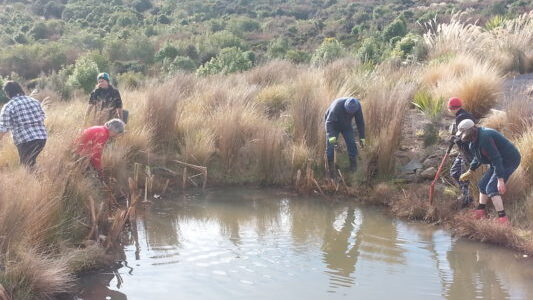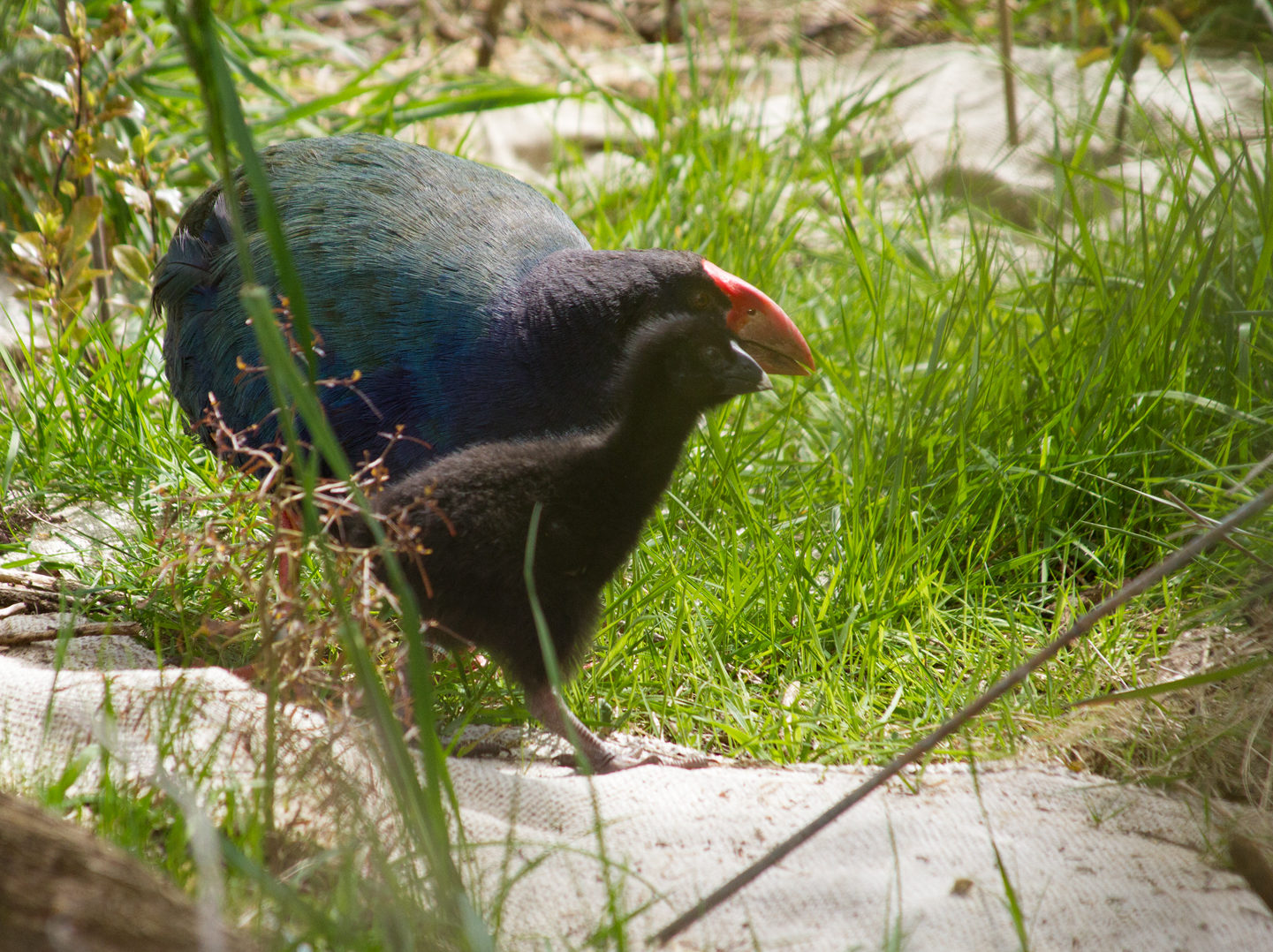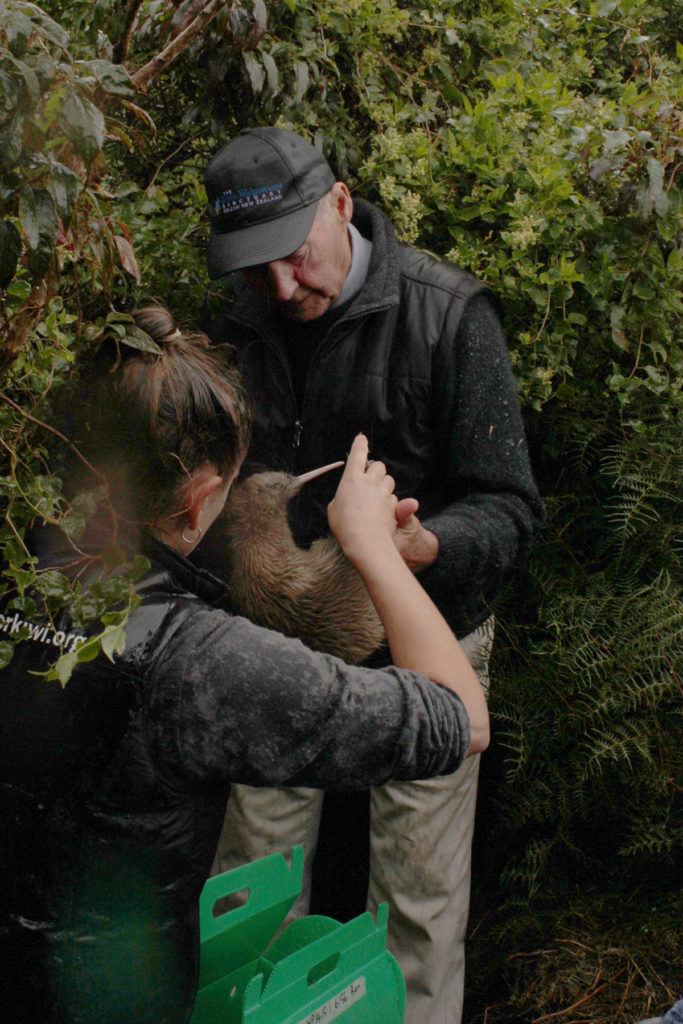A dedicated team of volunteers contribute an impressive 13,000 hours of work each year to Orokonui Ecosanctuary, just north of Dunedin. “Our volunteers help with every single thing we do,” says Orokonui’s general manager, Chris Baillie. “They have a very strong sense of community ownership of the Ecosanctuary.

Volunteers are rostered to come on certain days and take part in regular tasks such as lizard monitoring, putting out supplementary feed for our kiwi chicks twice a day and pest tracking tunnel monitoring.”
Many of those volunteers are highly skilled and have been playing a crucial role for a long time.
“Before the sanctuary fence was completed we had guided tours to show what was planned. One of those guides is still here volunteering.”

The fence was completed in 2007, 10 ½ years ago.
“Some of our volunteers are almost full-time,” Chris adds. “They have impressive commitment.”
The regular volunteers are usually retired people, but the sanctuary also gets large groups, of students for example, coming along to help out.
Orokonui Ecosanctuary consists of 307 hectares of Coastal Otago forest surrounded by a predator-proof fence. Monitoring for predators using tracking tunnels is a key part of ensuring Orokonui remains predator-free.
“We do still have mice. They’re hard to get rid of,” Chris admits, “but we had a localised poison operation for the first time in 10 years a couple of weeks ago and we’ve reduced mouse levels down to 1.6%. At that level they have little impact on wildlife. We check mouse numbers every couple of months and only have a targeted poison operation when necessary.”
Meanwhile, native wildlife numbers at Orokonui continue to grow, both through reintroductions and successful breeding. One of the latest additions – and very popular with visitors – is a recently hatched takahe chick being raised by its parents and an older ‘foster’ sibling.
“The chick is about 3 or 4 months old now,” says Chris. “It was quite well hidden early on, but after about 6 weeks it started coming out and now it’s regularly seen at the 11am takahe feeding time when the whole family come out. The takahe are one of the main attractions for visitors.”
It is the second ‘natural’ chick of its parents who have also raised two foster chicks successfully. One of those foster chicks remains at Orokonui, helping to raise the current offspring, while the other has returned to the Te Anau breeding programme.
Orokonui also has a ‘kiwi creche’ where young Haast tokoeka can spend some time putting on weight and condition before returning to the wild.
“We’ve got 7 chicks in the crèche at the moment,” Chris says. “They’re having a health check today and if they pass, they’ll be going back to Haast and we’ll get another cohort soon.”
“Orokonui established the creche in January 2015,” says Chris, “Recently the creche had been empty as predator control in the Haast region meant chicks were coping naturally. But a recent drought has left young Haast kiwi struggling a bit.”

Other young wildlife may also be on the way – but hatching could take a while.
“Just before Christmas tuatara researchers noticed a tuatara nest with what looked like viable eggs,” says Chris, “so there may be young tuatara in a year.”
Other reptiles at Orokonui include common skinks and geckos which were already present before the fence was built and green skinks, Otago skinks and jewelled geckos – iconic local species which have been reintroduced.
“South Island kaka, Haast tokoeka kiwi, South Island robins and the takahe have all been reintroduced,” says Chris, “while tomtits, bellbirds, tui, rifleman, fernbirds, brown creepers, grey warblers and fantails were here already.”
Sirocco the kakapo has also paid several, very popular visits.
There’s plenty for people to see and many beautiful trails to explore in what is mostly regenerated forest.
“They stopped farming the land back in 1920 when the land became a water catchment for the Orokonui hospital,” Chris explains, “so the forest is mostly regenerated, but there are pockets of 200-300 year old podocarp. We get 14,000 visitors a year to the sanctuary with another 14,000 just coming to the visitor centre. About 80% of visitors are New Zealanders.”
Education is also a big part of the sanctuary’s work.
“We have about 7000 students participating each year including outreach programmes off-site,” says Chris. “Students range from preschool to tertiary and we also have community education programmes, where, for example, we hold workshops on subjects like identifying ferns and trapping.”
The Ecosanctuary has also been the inspiration and motivation for predator control and habitat enhancement work in the surrounding halo area. This is great for wildlife as it spreads beyond the predator fence and also reduces pest pressure on the fence itself.
If you’re travelling down South this summer the ecosanctuary is well worth a visit. Orokonui is located just north of Dunedin. Turn-off from Highway 1 at the township of Waitati where the short drive to Orokonui is clearly signposted. Fancy a meal break while you’re there? The visitor centre includes a popular cafe with views across the sanctuary.

